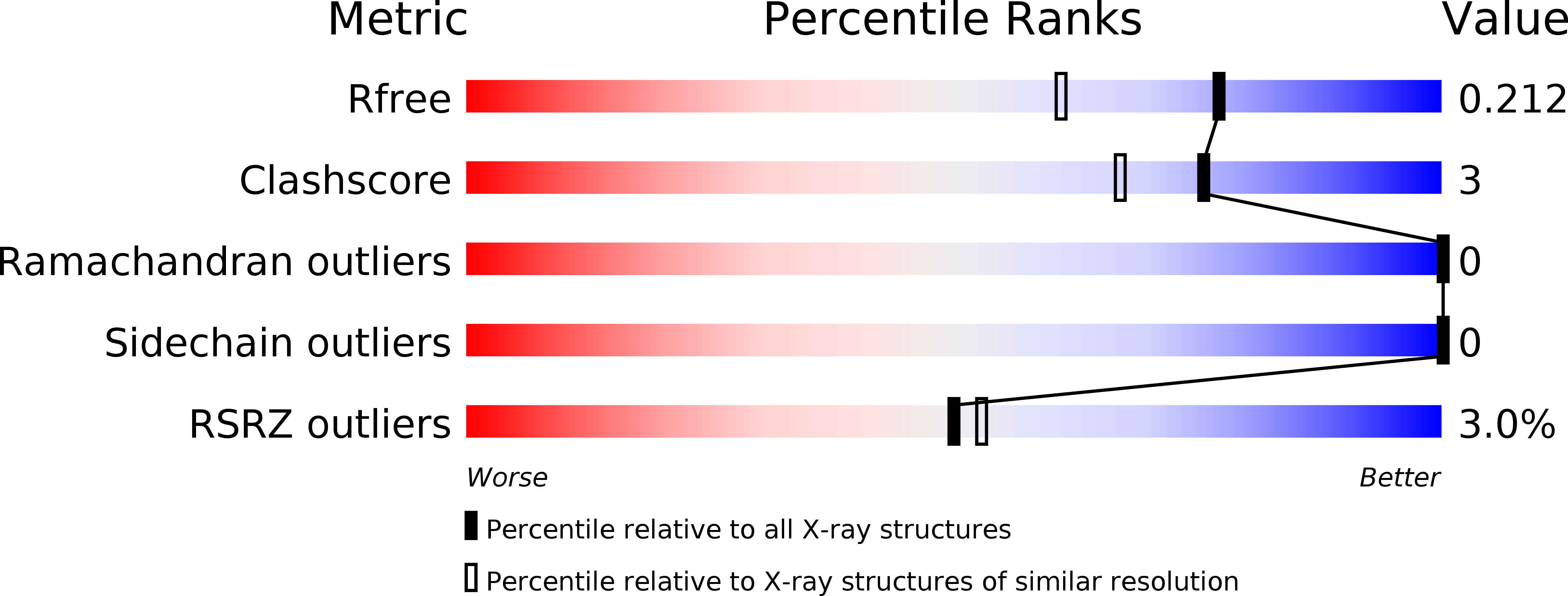Structural basis for ligand regulation of the fatty acid-binding protein 5, peroxisome proliferator-activated receptor beta / delta (FABP5-PPAR beta / delta ) signaling pathway.
Armstrong, E.H., Goswami, D., Griffin, P.R., Noy, N., Ortlund, E.A.(2014) J Biological Chem 289: 14941-14954
- PubMed: 24692551
- DOI: https://doi.org/10.1074/jbc.M113.514646
- Primary Citation of Related Structures:
4LKP, 4LKT - PubMed Abstract:
Fatty acid-binding proteins (FABPs) are a widely expressed group of calycins that play a well established role in solubilizing cellular fatty acids. Recent studies, however, have recast FABPs as active participants in vital lipid-signaling pathways. FABP5, like its family members, displays a promiscuous ligand binding profile, capable of interacting with numerous long chain fatty acids of varying degrees of saturation. Certain "activating" fatty acids induce the protein's cytoplasmic to nuclear translocation, stimulating PPAR¦Â/¦Ä transactivation; however, the rules that govern this process remain unknown. Using a range of structural and biochemical techniques, we show that both linoleic and arachidonic acid elicit FABP5's translocation by permitting allosteric communication between the ligand-sensing ¦Â2 loop and a tertiary nuclear localization signal within the ¦Á-helical cap of the protein. Furthermore, we show that more saturated, nonactivating fatty acids inhibit nuclear localization signal formation by destabilizing this activation loop, thus implicating FABP5 specifically in cis-bonded, polyunsaturated fatty acid signaling.
Organizational Affiliation:
From the Department of Biochemistry, Discovery and Developmental Therapeutics, Winship Cancer Institute, Emory University School of Medicine, Atlanta, Georgia 30322.


















